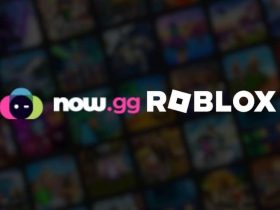The mobile app industry is a multi-billion dollar industry that has seen immense growth in recent years. As the industry diversifies, gaming is transitioning along with it, and consumers are reaping the benefits. The gaming industry has been evolving from arcade games to multi-player systems and now the development of mobile apps.
As smartphones become an unavoidable part of today’s technology, consumers are looking to their devices for most of their daily conveniences — from banking to their daily news and everything in between. Entertainment is a significant part of the mobile experience, and gaming apps are becoming increasingly popular as a result.
When it comes to developing a game for mobile devices, there are several aspects developers need to understand. The process from conception to execution is full of essential details that will impact how your game is received in the market. Before you jump ahead, let’s look at some of the crucial components you must understand before you begin the process of creating an original gaming app for mobile devices.
1. Identify Current Trends
Much like any major industry, what’s popular at the moment is dependant on the trends in that particular industry. A specific app may be the top download in gaming development until a new game comes along and takes the top spot.
As an app developer, it’s crucial that you’re paying close attention to your industry’s trends and current market fluctuations. While you don’t need to follow trends strictly, it’s important to know what consumers are downloading, so you can tailor your app to meet their core needs — including the user interface, data usage, and download speeds, among many others.
2. Challenges & Benefits
When you’re developing a gaming application, you’re working to balance the challenges and benefits that each user will experience as they play. No matter what type of game you’re creating — puzzle-based, action or adventure, or trivia-style — there will be challenges or levels for players to overcome and associated benefits for reaching each milestone.
Developers need to understand how to balance their game’s challenges and benefits to ensure each player’s experience is fair and enjoyable. If your challenges are of a higher skill level, they’ll likely take time and patience to complete. This means those rewards should feel appropriate to the level of difficulty of those obstacles. With the right balance, players will see the value in your game and desire to reach its highest level.
3. Decide on Key Platforms
As you begin the technical aspects of designing your game, you’ll need to identify the key platforms that will feature your app. Each mobile platform is unique and may require its own set of code or properties that developers will need to incorporate to be accepted into their app store.
Android and iOS are the key mobile platforms on the market. It’s essential you’ve conducted enough research and identified which platform makes the most sense for your game. If you choose to create a game that can live in both stores, you’ll likely need to incorporate additional data to develop this hybrid application.
4. Seamless User Experience
The way your game operates and plays is one of the most critical aspects of the entire development process. From the moment they choose to download your app, it’s your responsibility to ensure the game you’ve designed is tailored to the user’s experience.
On the surface, you want to ensure your graphics are engaging and of excellent quality. Each character should serve a purpose, and you’ll likely want to develop a storyline that players can follow. On the backend, your code should be free of bugs and have ample download speeds. The last thing users are looking for in a gaming app is delays and glitches.
5. Utilize Social Media
Social media is undoubtedly one of the significant aspects of the mobile experience. From major social media platforms to the communities they foster, mobile users are on social media for hours each and every day. This presents a responsibility and opportunity for developers to market their app even before it hits the market.
Social media is a tool that cannot be overlooked. Even if you have minimal experience on social platforms, you can follow tips and tricks to begin the marketing and promotional process. To see your game reach its full potential, you need to ensure you’re promoting its features to as many people as possible — to create the buzzy you need to make your mark in the gaming industry.

















Leave a Reply